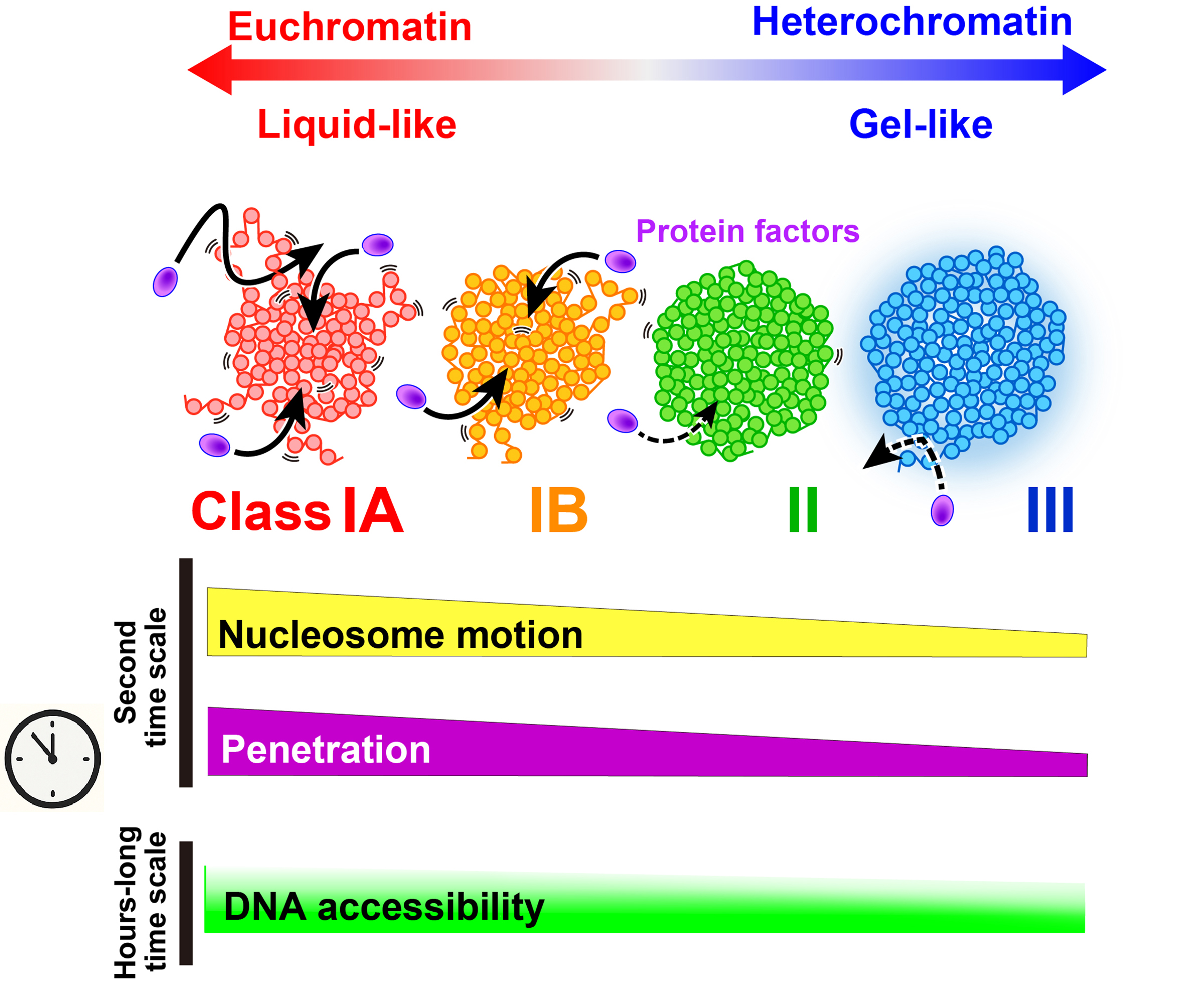Euchromatin and heterochromatin: implications for DNA accessibility and transcription
Maeshima Group / Genome Dynamics Laboratory
Euchromatin and heterochromatin: implications for DNA accessibility and transcription
Katsuhiko Minami#, Adilgazy Semeigazin#, Kako Nakazato, and Kazuhiro Maeshima*
# co-first authors; * corresponding author
Journal of Molecular Biology (2025) DOI:10.1016/j.jmb.2025.169270
In higher eukaryotic cells, such as those in humans, genomic DNA wraps around core histone proteins to form nucleosomes. These nucleosomes further fold into condensed chromatin domains that exhibit a range of folding patterns—from transcriptionally active euchromatin to inactive heterochromatin. Over the past 15 years, research, including that conducted by the authors, has revealed that these chromatin domains display liquid-like behaviors. Katsuhiko Minami (Postdoctoral Fellow, former SOKENDAI student, and JSPS Research Fellow DC2), Adilgazy Semeigazin (SOKENDAI student and MEXT Scholar), Kako Nakazato (SOKENDAI student), and Professor Kazuhiro Maeshima of the Genome Dynamics Laboratory have discussed in this paper the physical properties and dynamic behaviors of chromatin in living cells. They have further examined how these physical characteristics are linked to the regulation of gene transcription and DNA replication from the perspective of “DNA accessibility.”
Their recent findings, based on single-nucleosome imaging (paper link or NIG press release), revealed that within condensed chromatin domains, euchromatin behaves more like a liquid, while heterochromatin behaves more like a gel. These physical properties directly impact how large proteins can penetrate into the chromatin environment (accessibility), and they are considered to play critical roles in regulating genome functions such as transcription, DNA replication, and repair (see figure). The authors also discussed that euchromatin and heterochromatin have comparable accessibility on a long time scale, based on findings from DNA adenine methyltransferase (Dam) experiments. This paper is published in the Journal of Molecular Biology special issue, “Imaging of the Central Dogma.”
This work was supported by the Japan Society for the Promotion of Science (JSPS) and MEXT KAKENHI grants (JP23K17398, JP24H00061, JP23KJ0998), the Platform for Advanced Genome Science (PAGS; JP22H04925), JST SPRING (JPMJSP2104), JSPS Research Fellowship (23KJ0998), and the Takeda Science Foundation.

Figure: Physical properties and accessibility of euchromatin and heterochromatin
Euchromatic (actively transcribed) nucleosomes fluctuate like a liquid, while heterochromatin (transcription is repressed) behaves like a gel. Such local nucleosome fluctuations facilitate protein access to chromatin domains on a short time scale. Euchromatin and heterochromatin have comparable accessibility on a long time scale.















